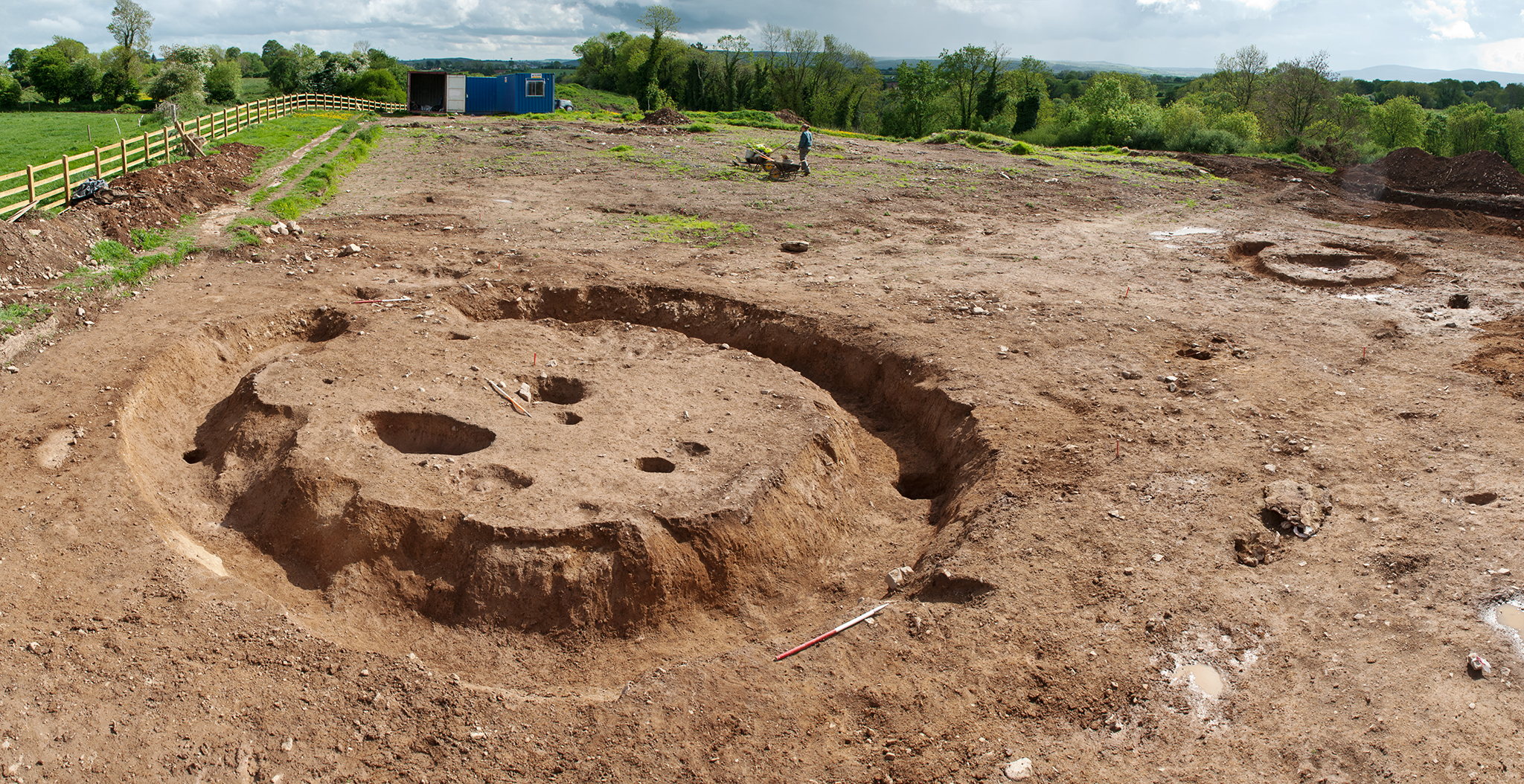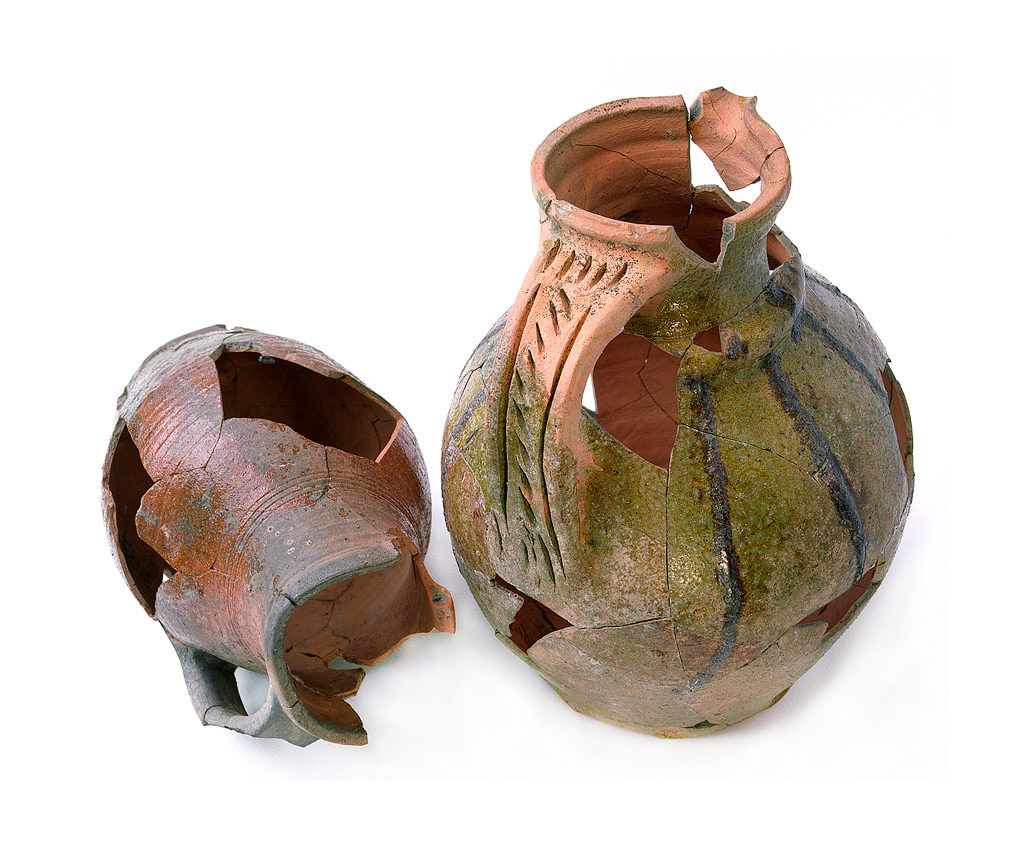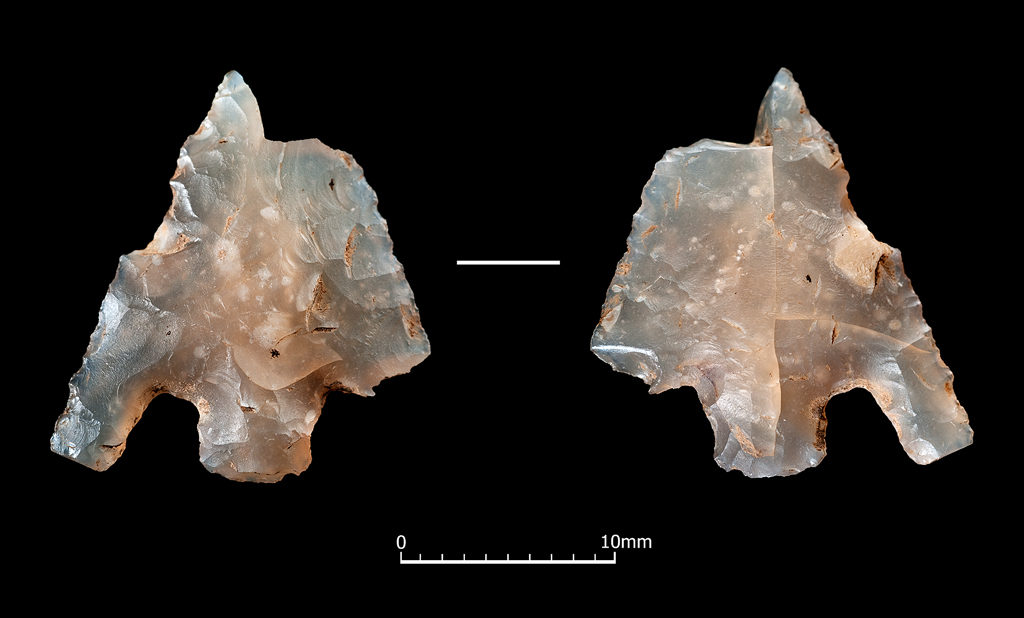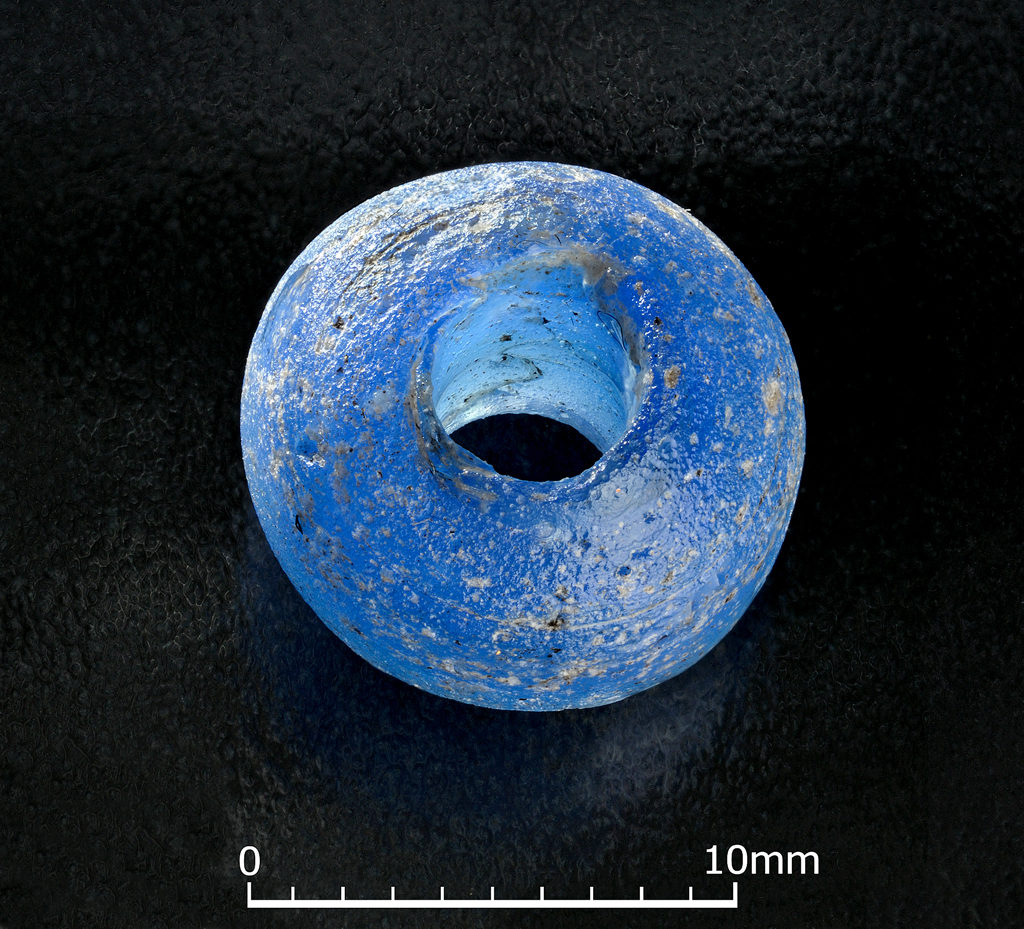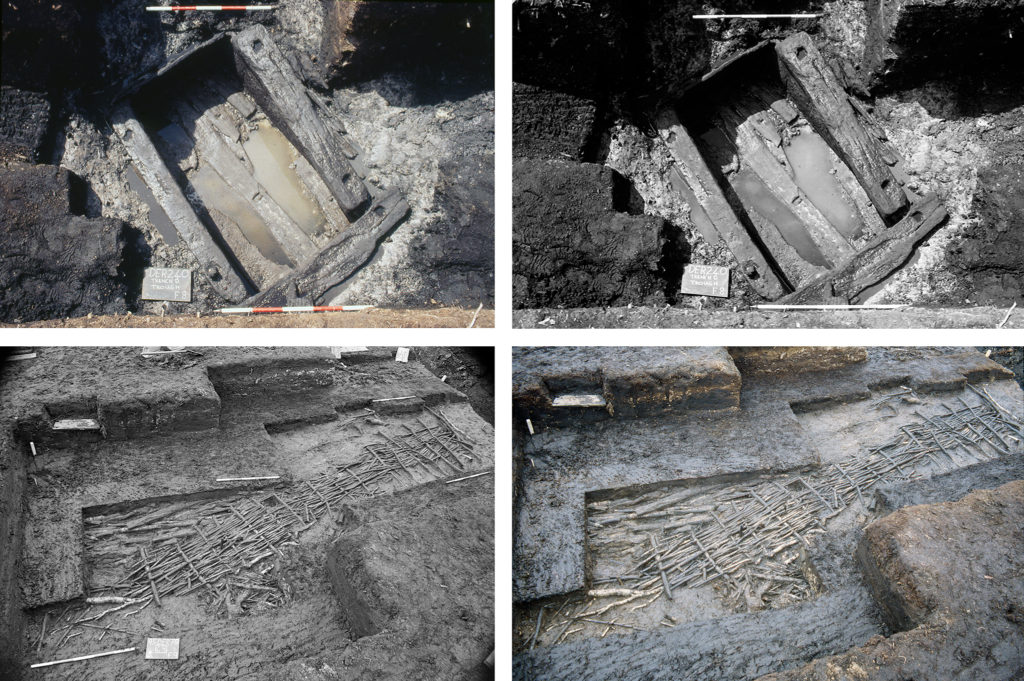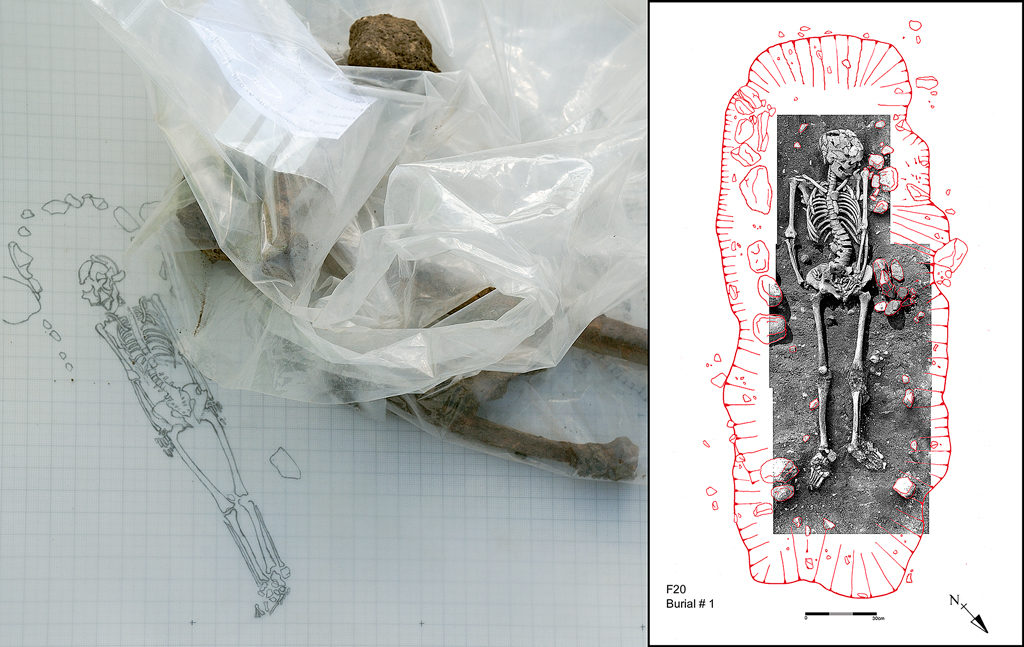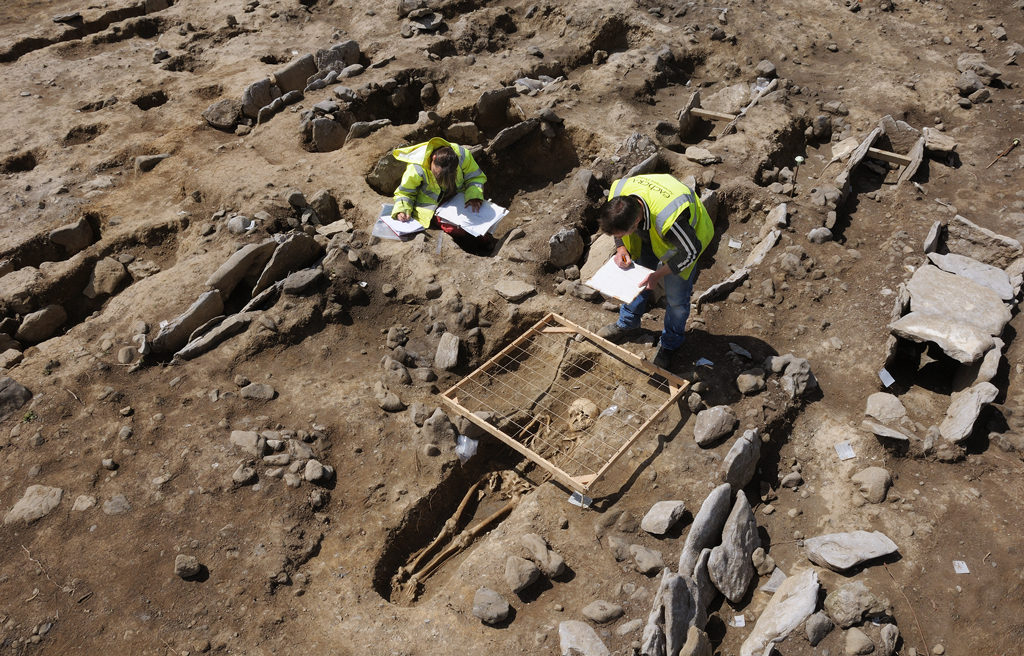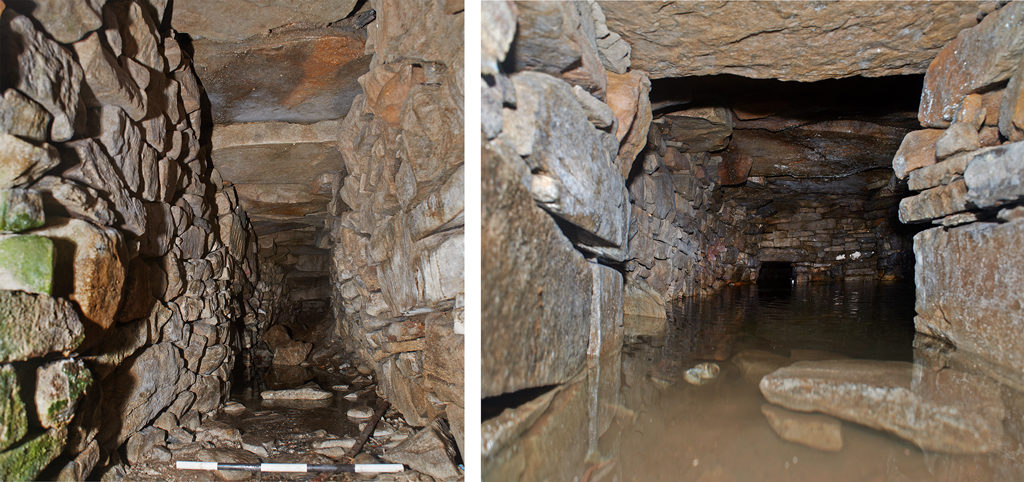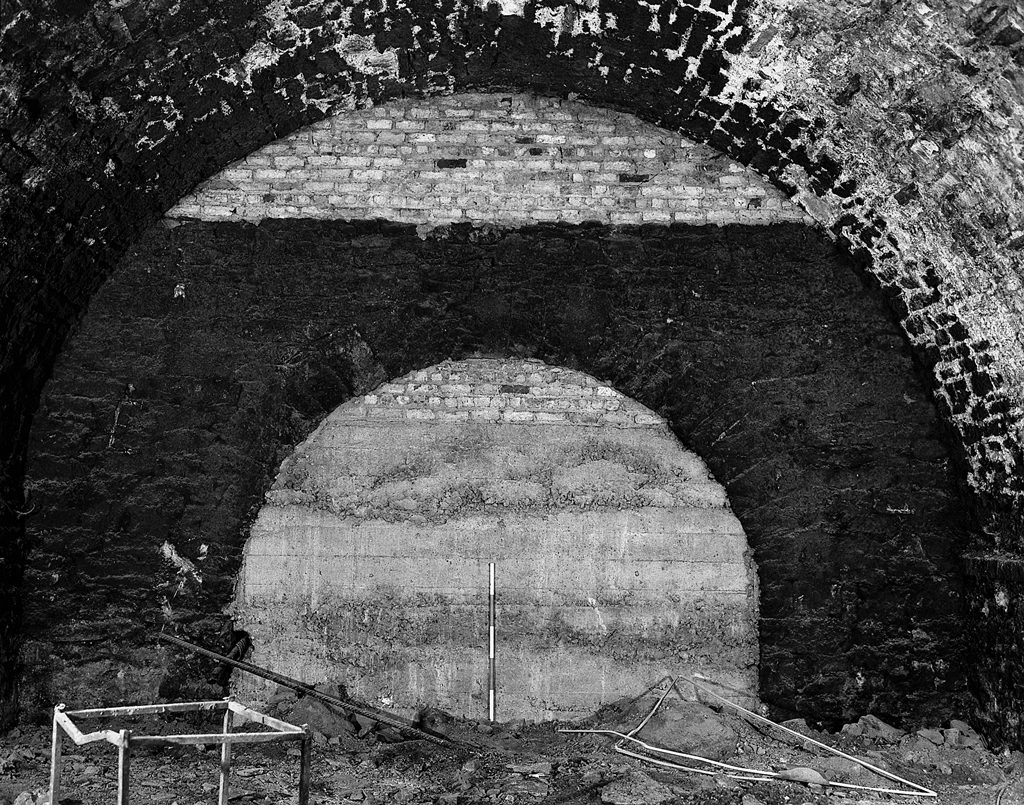A composite photograph of a Bronze-Age barrow excavated at Ballinacarriga, on the N8 Fermoy to Mitchelstown road scheme. Clients; Eacthra and T.I.I. (formerly N.R.A.) 2007.
A major part of my commissioned practice for over two decades has been the provision of photographic services to archaeological consultancies and government bodies. This has taken the form of photographic projects and consultations as an advisor as to the methods and methodologies of various aspects of the photographic representation of cultural heritage and the environment.
My involvement in archaeology began in 1986 when I was trained by Birmingham University in Field Archaeology. I subsequently followed a career in archaeology alongside my arts practice, eventually being promoted to assistant director with Margaret Gowen & Co. Ltd. I then set up as an archaeological photographer. I also have an M.A. in Documentary photography and recently completed a doctorate titled In Flux; land photography and temoprality (see the rest of this website for further information).
I offer services as follows;
Artefact photography – I am able to provide highly detailed images of any kind of artefact, if a detail can be seen then I can photograph it, employing independent lighting, specialist equipment, techniques and comprehensive knowledge of both archaeology and photography.
Site photography – I can advise on methodologies and techniques of producing digital site archives. I can also provide training workshops for staff, students and volunteers. I also make site visits on demand or at regular intervals to record difficult sites or features.
Monument and architecture surveys – I provide a photographic survey service for clients of architecture and monuments that includes working closely with the client to develop and undertake the brief. This includes photo-grammetry and the use of artificial lighting in difficult circumstances (eg underground chambers etc.)
Landscape photography – I fully understand the representation of places as temporal and spatial environments and take into account cultural, ecological and historical research when depicting landscapes.
See below for examples and a more comprehensive description of my approaches.
Outcomes
Products can be provided as digital files and as prints ready for display in a wide variety if contexts. I have experience of producing photographs for a number of uses ranging from archives to large scale works for external banners and museum and gallery exhibitions.
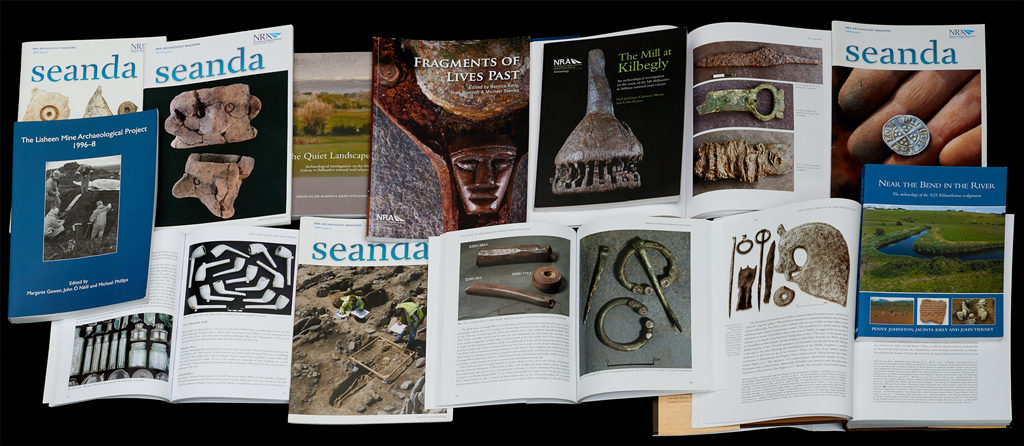
My work has appeared in at least 30 major publications including books (The Lisheen Mine Archaeological Project 1996-1998 (2005), Places Along the Way (2010), A History of Ireland in 100 Objects (2013) The Quiet Landscape (2014), Fragments of Lives Past (2014) Illustrating the Past (2015); magazines (Archaeology Ireland, Seanda, Epoch [German Magazine]); reports, journal articles, conference posters and exhibitions (New Roads New Discoveries, Cork Public Museum).
Clients include;Transport Infrastructure Ireland (formerly National Roads Authority) Archaeology Section, Margaret Gowen and Co.Ltd., Archaeological Consultancies Services (A.C.S.), Eachtra Archaeological Projects, TVAS Ireland Ltd., University College Dublin, School of Archaeology and many more ranging from individual licence holders to major institutions and consultancies.
I am available for consultation and commissions and can be contacted on ++353(0)863614160 or via email at samsunderland[at]gmail[dot]com. Call to discuss specific projects and your photographic needs in general. I will then draw up a costing as required. Services offered as follows;
ARTEFACTS
Viking Fighting Axe From excavations at Georges Street, Dublin. Client Margaret Gowen & Co. Ltd. 2003.
I employ a variety of strategies and techniques to record and represent artefacts dependent on the needs of the client. These range from an ‘on mass’ production-line output to deal with large assemblages of small finds, to bespoke specific imaging practices on single objects in line with the development of the texts that the photographs serve to illustrate. The types of images produced reflect the needs and styles of the commissioning body and the anticipated output of the images.
A wooden gaming board from the Drumclay Crannog, AE1101199. An example of an artefact floating on a white background, useful for close incorporation with texts in publications. Client Northern Ireland Historic Environment Division/UCD School of Archaeology 2016.
These techniques can range from objects floating in ‘non-space’ without any background, to situating the artefacts in appropriate backgrounds or settings that enhance the knowledge and interpretation of the find by adding to the textual narrative through appropriate contextualisation.
A necklace of ceramic beads re-united with the bone from the cremation they were discovered in, client T.I.I. 2016.
Detail of a ladle with a slate background. Client T.I.I. 2013.
Medieval ceramic pitchers form Adare Castle, Co. Cork. Client Eachtra 2003.
Conventions of archaeological illustration can be applied to photographs with appropriate standardised scales or images can be made that depict the objects overall shape and volume more in keeping with museum display techniques.
Both sides of a used arrow-head following illustration conventions.
A glass bead photographed using composite photography to maintain sharpness across the entire artefact despite it’s small size.
I have dealt with most artefact types including wood, glass, metal, bone, lithics, ceramics and so on. I often use compositing techniques to maintain focus across the surface of the artefact, or to achieve high resolution images. Metadata and keywords can be added to the photographs as required.
In handling and moving artefacts I always follow the guidelines of appropriate specialists such as conservators or post-excavation managers, striving to protect the object in accordance with best practice. No risks are taken. Artefacts can be photographed either at their current location (with a portable studio) or in my own studio in accordance with requirements.
EXCAVATIONS
I worked as a field archaeologist for over 20 years and have experience of photographing excavations from the early 1990s. As such I have seen the development from conventions using film to the enhanced digital imaging techniques currently available.
Examples of the convention of taking both black and white film and colour slides of features from the Lisheen Mine Archaeological Project in 1997. This was a widespread convention of site photography before the advent of digital imaging technologies.
I am able to offer advice on a consultancy basis on various aspects of site photography, particularly on how to organise the day to day practice that routinely creates images for an accurate archive and photographic data base using metadata with publication standard images. I am available to develop and implement photographic strategies in this context in consultation with the client. I can also offer workshops for staff or students on the subject.
Wooden barrels and a stone lined well used as part of an early municiple water supply at Newmarket, Dublin. Client Margaret Gowen & Co. Ltd. 2003.
A Cereal kiln partially excavated at Bucherstown on the N7 Nenagh road scheme. Client Eachtra / T.I.I. 2007.
Record photography on site can range from basic feature photography and general site and environment imaging to complex compositing and photo-grammetry practices that map features on site and can be closely allied to scale drawings.
A early example of the use of photo-grammetry to record articulated human remains. In this case black and white film was used in conjunction with scale drawing. With digital technologies more complex features can be recorded using this method.
Compositing processes have been greatly enhanced by recent technological developments in digital photography and software programmes, as such they can be useful to create highly detailed images in difficult circumstances, but this requires specialist knowledge, particularly if the images require cartographic accuracy. I am available to undertake this kind of work.
I do not offer an aerial photography service. I would also not advise clients to use cherry pickers on site as the use of Unmanned Aerial Vehicles (UAVs or drones) is safer. Note that the commercial use of drones is governed by regulations see here for advice. I can advise clients on sourcing a suitable professional service provider or advise them further on other options, such as hiring satellites.
Process photography. Faithfully documenting the processes of excavation can be a useful way of reaching a wide audience by following the experiential processes of excavating. This technique involves the creation of a visual narrative of how an excavation is undertaken as well as what is excavated. This can be both evidential and evocative of the experience of the site as a temporal place and has various applications alongside direct recording practices for lectures, press releases, publications and exhibitions.
A Neolithic structure, Medieval ditch and a C19th house all under excavation. Client Eachtra/ T.I.I. 2007/8.
A variety of activities undertaken in the process of investigating archaeological sites. Client Eachtra/ T.I.I. 2007/8.
MONUMENTS AND ARCHITECTURE
A passage way and partially flooded chamber inside Killala soutterain. During the survey a carving of a cross was discovered on a lintel further down the passage way (publication forthcoming) Client Mayo Co.Co. 2015.
I have experience of recording buildings and monuments undergoing change recording salient features with photo- grammetry, compositing and artificial lighting. I also undertake surveys of monuments as part of a broader data gathering process, including working in difficult environments both in terms of access and lighting, such as working in confined spaces and underground.
A vault at Connolly station, Dublin, subsequently demolished to make way for the LUAS station on the site. Client Margaret Gowen & Co. Ltd. 2002.
LANDSCAPE
A Hill Fort at Cush, Co. Cork. Client, A local historical group. 2011.
Landscape is a term with many possible interpretations, often depending on the context it is used in. In my practice I understand it to basically mean a distanced view, rather than anything specific. In terms of a commission, then what is required and understood to be a landscape would be discussed and appropriate research could be applied to the landscape in question. This may, for, example, take a re-photography approach; by looking through archives at earlier photographs of the scene, a new image could be made that reflects the history of the landscape’s representation, even to the extent of employing similar technologies like black and white film.
Further research and practice that deals with the concept of landscape can also be found elsewhere on this website in various projects that deal with concepts of change in the environment (Hinterland and Continuum for example).

